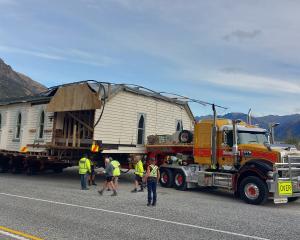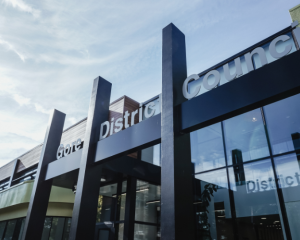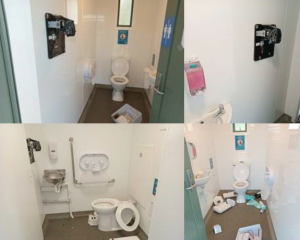Martin Ambrosio Celery-Halabi (Martin Halabi), who was a seasonal worker at Milford Sound, died on August 17, 2013, from massive traumatic injuries after slipping on rocks at the top of the Bowen Falls and falling about 160m to the pool below.
In his findings, Mr Crerar said the decision by Mr Halabi (18) and his two friends, Aaron Dowling and Nikolai Seehausen, to climb a track to the top of the falls to view and photograph the sunset was ''entirely reasonable''.
The trio left from their accommodation at Milford about 4.30pm and after reaching the viewing area, Mr Halabi and Mr Seehausen sat on a rock at the top of the falls, ate food which they had brought with them and took photographs.
Mr Dowling did not join them as he considered the rocks hazardous.
As Mr Halabi got to his feet from what his friends described as a relatively cramped position, Mr Seehausen saw him slip.
Mr Halabi cried out and then slid along the rock and out of sight over the edge of the falls.
Both his companions tried to look over the edge of the falls but decided it was too dangerous.
They received no response when they called out to Mr Halabi, so quickly descended via their previous route.
Mr Seehausen went to the hotel to raise the alarm and Mr Dowling hitched a ride to the bottom of the falls with others who had been enlisted to help.
Waiata Miller and Micah Patrick Hansan were the first to arrive at the falls, where they found their friend, Mr Halabi, and saw he had suffered severe, immediate and fatal injuries.
A helicopter and a police rescue team from Te Anau arrived at the scene at 8.30pm.
In his coronial autopsy report, specialist pathologist Dr Roland Lass said Mr Halabi died of ''massive traumatic injuries'', specifically multiple skull fractures and fractures of his right wrist, left femur, patella, tibia and fibula, as well as internal injuries.
A toxicological analysis of blood and liver samples taken from Mr Halabi detected a trace of alcohol, less than 5mg per 100ml of blood, but this could have been from other means than deliberate ingestion.
There were no drugs in his blood.
The coroner's report said Constable Chris Boulton, of Te Anau, ascended the track to the top of the falls the following day with Mr Seehausen.
Const Boulton said the rocky clearing at the top of the track leading to the edge of the cliffs was slick with water spray from the nearby river and featured moss and other slippery growth.
There was ''virtually no traction on this surface ... very treacherous underfoot'', Const Boulton said.
Mr Halabi's well-worn running shoes were unsuitable for the slippery rocks, Mr Crerar noted.
The access route was only known to a few Milford locals and was not supervised by the Department of Conservation.
After taking advice on whether the track should be signposted, Mr Crerar accepted it was preferable not to draw the existence of the route to the attention of casual users.
However, he would forward his findings to Doc and ask the department to consider placing a sign warning of the dangers of the slippery rocks in the clearing at the top of Bowen Falls.
While the route up to the viewing area was unofficial, not signposted and not maintained, it did not cause the death.
''The main cause of the slip and fall by Martin Halabi was obviously his placing himself in a position of extreme danger.
''As he got to his feet, he must have become slightly unbalanced and was unable to prevent himself from slipping.''
Police were satisfied there was no criminal liability or suspicious circumstances surrounding Mr Halabi's death and Mr Crerar said there was no evidence to suggest it was ''anything other than a tragic accident''.











